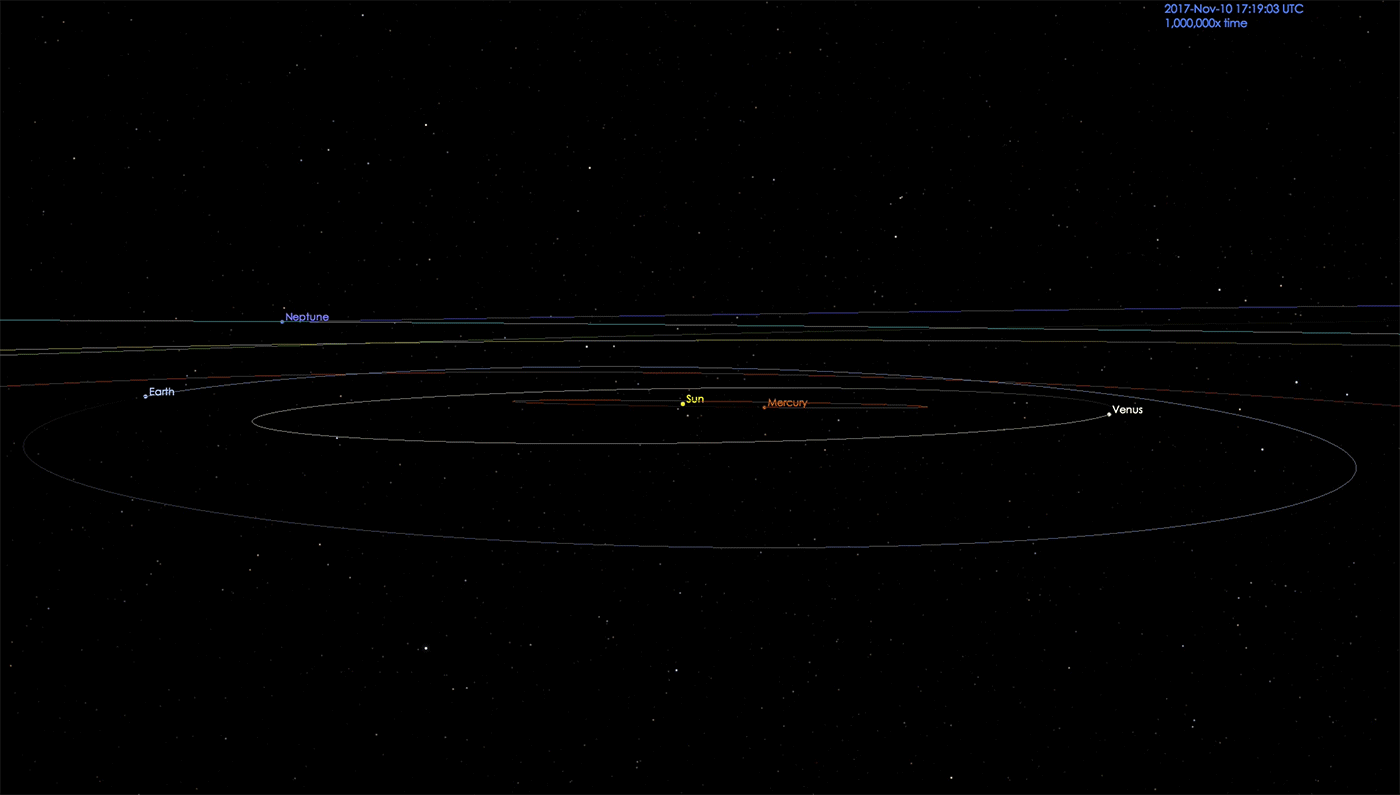No, an Asteroid Is Not Going to Collide with Earth in February
In recent days, a few media outlets have reported (in some cases, rather sensationally) that a "potentially hazardous" asteroid will fly close to Earth on Feb. 4. Are the reports correct? Absolutely! Is there any need to panic? Absolutely not!
It's true that the building-size asteroid 2002 AJ129 will pass by Earth within about 10 times the distance from Earth to the moon (about 2.6 million miles, or 4.2 million kilometers), according to NASA. The asteroid is about 0.3 to 0.75 miles (0.5 to 1.2 km) in diameter — for comparison, the world's tallest building is 0.51 miles (0.82 km) tall, while the new World Trade Center building in New York is 0.33 miles (0.53 km) tall.
NASA representatives say there's no chance that it will collide with Earth.
"We have been tracking this asteroid for over 14 years and know its orbit very accurately," Paul Chodas, manager of the Center for Near-Earth-Object Studies at NASA's Jet Propulsion Laboratory, said in a statement. "Our calculations indicate that asteroid 2002 AJ129 has no chance — zero — of colliding with Earth on Feb. 4 or any time over the next 100 years."

Nonetheless, with no context, asteroid 2002 AJ129's close flyby might seem remarkable. But what many outlets failed to mention is that rocks of this size fly close to Earth somewhat regularly; in fact, two space rocks came significantly closer to our planet just this week.
Thursday (Jan. 18), the car-size asteroid 2018 BD (discovered just this year) came to within 0.09 times the distance from the Earth to the moon (about 21,500 miles or 34,600 km), according to NASA's Solar System Dynamics website and the Minor Planet Center. And Asteroid 2018 BX, which is also about the size of a car or bus, made its close flyby of Earth late Friday night (U.S. Eastern time on Jan. 19), zipping past Earth at a distance of about 0.73 times the distance from the Earth to the moon (about 174,400 miles or 280,670 km).
While those space rocks are smaller than 2002 AJ129, they came to within the altitude range where some communications and GPS satellites orbit, which means a worst-case scenario could have involved a collision between one of the space rocks and a satellite.
Get the Space.com Newsletter
Breaking space news, the latest updates on rocket launches, skywatching events and more!
Asteroids much larger than 2002 AJ129 also make relatively close flybys of Earth somewhat regularly. On Sept. 1, 2017, the 2.7-mile-wide (4.4 km) Asteroid Florence passed within about 4.4 million miles (7 million km) of Earth, or about 18 times the distance from Earth to the moon. Another bus-size asteroid, known as 2017 SX17, zoomed within 54,100 miles (87,065 kilometers) of Earth on Oct. 2, 2017.
While NASA did designate 2002 AJ129 as a "potentially hazardous" asteroid, it's important to note that this designation is given to any asteroid larger than about 460 feet (140 m) in diameter that gets closer than 4.65 million miles (7.48 million km) to Earth.
Near-Earth asteroids can indeed pose a threat to the inhabitants of planet Earth, but remember that not all space rocks are to be feared.
Editor's Note: Asteroid 2018 BX will flyby Earth at a distance of about 0.73 times the distance from the Earth to the moon (about 174,400 miles or 280,670 km), not 0.74 times the lunar distance, as previously stated.
Follow Calla Cofield @callacofield. Follow us @Spacedotcom, Facebook and Google+. Original article on Space.com.
Join our Space Forums to keep talking space on the latest missions, night sky and more! And if you have a news tip, correction or comment, let us know at: community@space.com.

Calla Cofield joined Space.com's crew in October 2014. She enjoys writing about black holes, exploding stars, ripples in space-time, science in comic books, and all the mysteries of the cosmos. Prior to joining Space.com Calla worked as a freelance writer, with her work appearing in APS News, Symmetry magazine, Scientific American, Nature News, Physics World, and others. From 2010 to 2014 she was a producer for The Physics Central Podcast. Previously, Calla worked at the American Museum of Natural History in New York City (hands down the best office building ever) and SLAC National Accelerator Laboratory in California. Calla studied physics at the University of Massachusetts, Amherst and is originally from Sandy, Utah. In 2018, Calla left Space.com to join NASA's Jet Propulsion Laboratory media team where she oversees astronomy, physics, exoplanets and the Cold Atom Lab mission. She has been underground at three of the largest particle accelerators in the world and would really like to know what the heck dark matter is. Contact Calla via: E-Mail – Twitter









